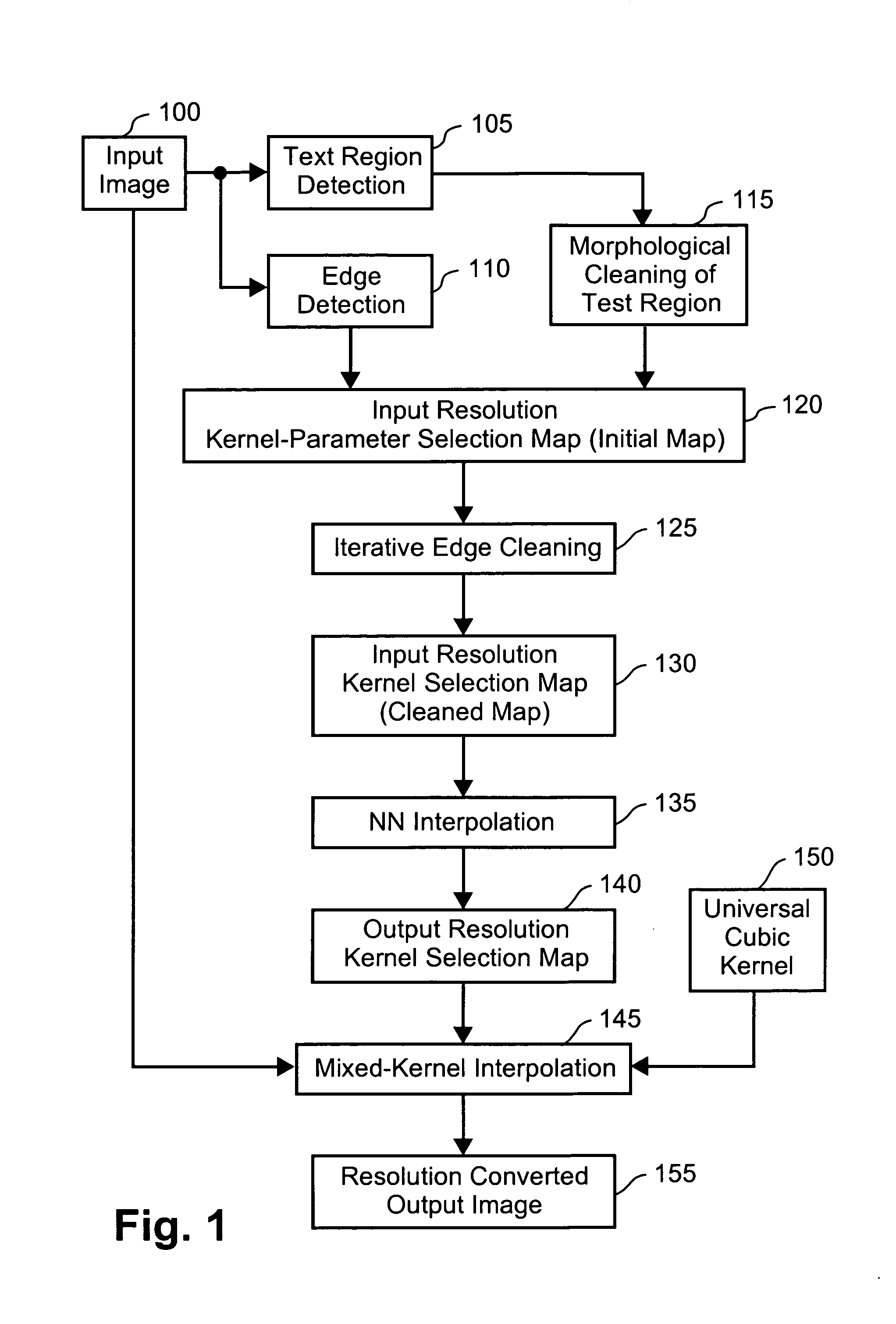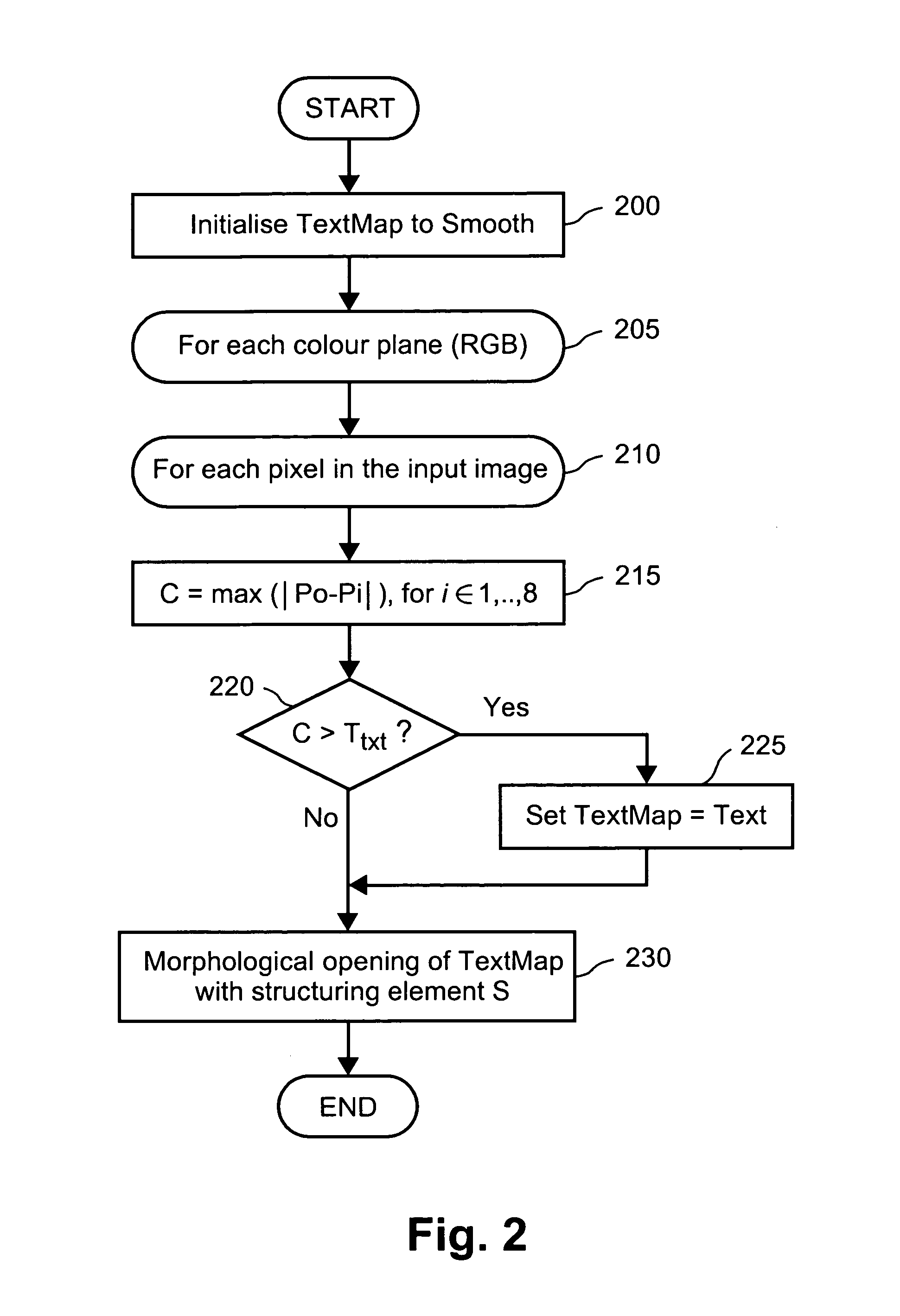Method of kernel selection for image interpolation
- Summary
- Abstract
- Description
- Claims
- Application Information
AI Technical Summary
Benefits of technology
Problems solved by technology
Method used
Image
Examples
first embodiment
[0062]the present invention discloses a method of image interpolation that automatically selects the appropriate interpolation kernel for each image region. This selection is based not only on edge strength, but also edge direction and local edge context information. In addition, high contrast text regions are also detected and interpolated so as to preserve the shape and contrast of the text.
second embodiment
[0063]the present invention adjusts the parameters of a single interpolation kernel so as to reshape the kernel to the appropriate shape for each region in the image.
[0064]The proposed resolution conversion method first identifies high contrast text regions and then measures both edge strength and edge orientation of the image data. In the first embodiment, the text and edge information is then used to select the appropriate interpolation kernel to use. In the second embodiment, the edge strength and the edge orientation data is used to adjust the parameters of an interpolation kernel. Context information, from the text and edge maps, is then used to remove unnecessary kernel changes and prevent selection of an inappropriate kernel. This post-processing on the raw edge information is required to reduce and remove any interpolation artifacts.
[0065]The disclosed interpolation method according to the preferred embodiment will be briefly explained with reference to FIG. 1. The method co...
PUM
 Login to View More
Login to View More Abstract
Description
Claims
Application Information
 Login to View More
Login to View More - R&D
- Intellectual Property
- Life Sciences
- Materials
- Tech Scout
- Unparalleled Data Quality
- Higher Quality Content
- 60% Fewer Hallucinations
Browse by: Latest US Patents, China's latest patents, Technical Efficacy Thesaurus, Application Domain, Technology Topic, Popular Technical Reports.
© 2025 PatSnap. All rights reserved.Legal|Privacy policy|Modern Slavery Act Transparency Statement|Sitemap|About US| Contact US: help@patsnap.com



